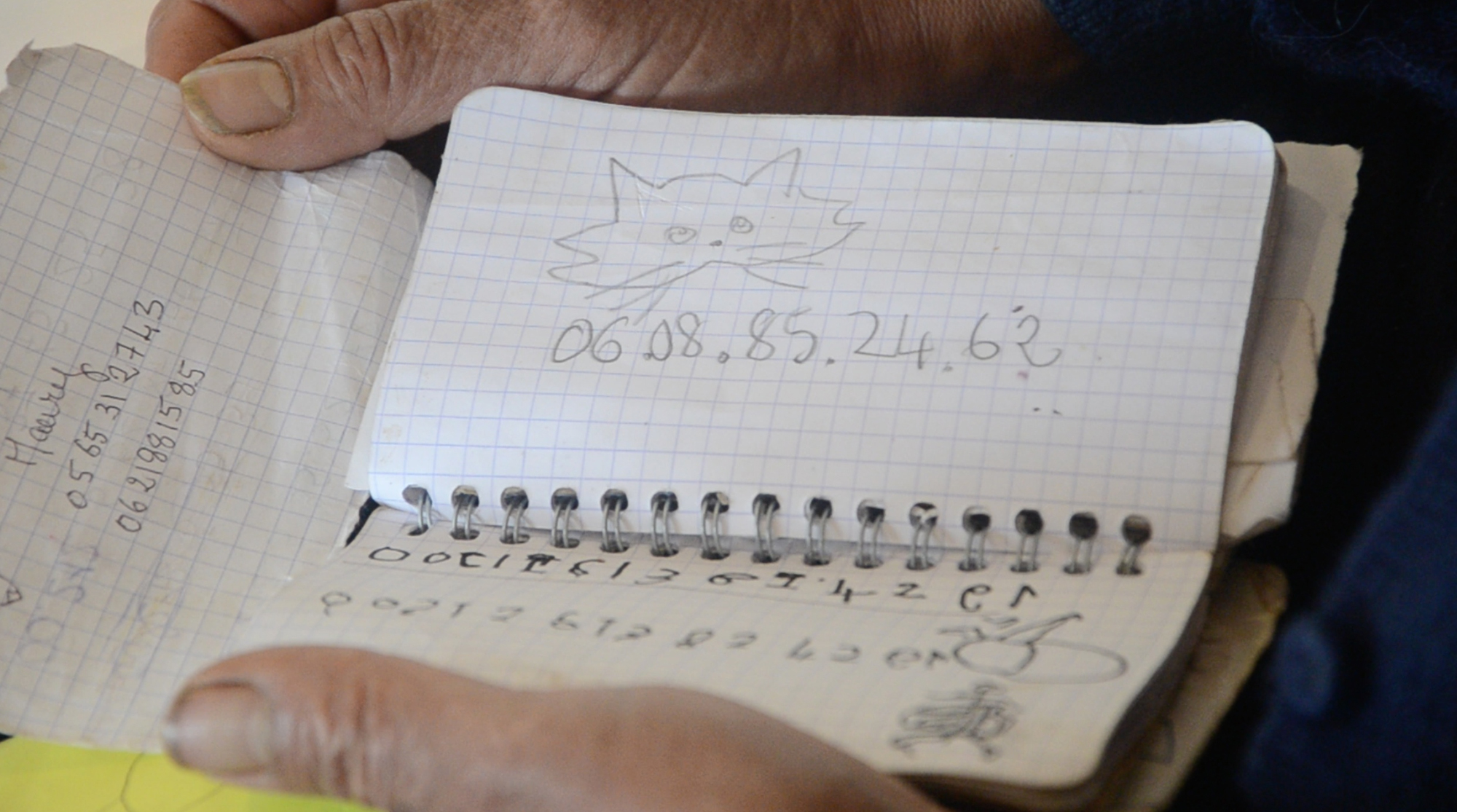
On Drawing is a research and artistic project that establishes a connection between thinking and drawing in the realms of arts and science. It was initiated in 2014 when I met Mina Pegourie (the housemaid of an art residency that I attended in France). Mina is originally from Morocco, but has been living in France since the age of 12. During my stay I developed a special affinity with her, despite having only met her two or three times over my whole residency period of 1.5 months. One day in particular, she came to my studio and showed me her address book. Since she is unable to read or write, her address book is composed simply of contact numbers alongside corresponding drawings. I became fascinated by the beauty and simplicity of her drawings, together with the logic behind her methods as a survival tool. Thus, I recorded a video in which she presents the drawings in her address book together with the story behind each one. Afterwards, I held several drawing sessions in which I asked her to draw different elements from geometrical forms to standard objects, and I filmed the whole process. I was interested to see how she would react to a simple drawing activity as well as the mental and physical consequences of working to a certain specified goal. Above image: Ana Mendes, On Drawing, 2016, HD, color, stereo, 09:53, Stuttgart (DE) © Ana Mendes

Mina Pegourie, Canary, pencil on paper, 2014, 14,8 x 5, 8 cm, Saint-Cirq-Lapopie (FR) © Mina Pegourie
After filming this work, I decided to develop a project that aims at establishing a connection between thinking and drawing, collaborating with people from different fields, from scientists to artists, ordinary citizens or children. Recently, I edited the film, which is now being shown in festivals, galleries and other such exhibition venues. At the same time, I am undertaking research to develop a performance-lecture based on drawing, as well as a series of exhibitions. The results of my research have been, partially, uploaded to the blog On Drawing, in which I publish short articles on related issues. Some of the topics that I have developed address the connections between drawing and neuroscience, the extended cognition, the children’s case, drawing and movement , the artist as scientist and the philosophy of pictures, among others. There are also contributions by other researchers on this blog, such as Gavin Steingo (USA), who problematises the question of‘Drawing as more than one’ – what happens when a pregnant woman draws? Who or what is drawing?
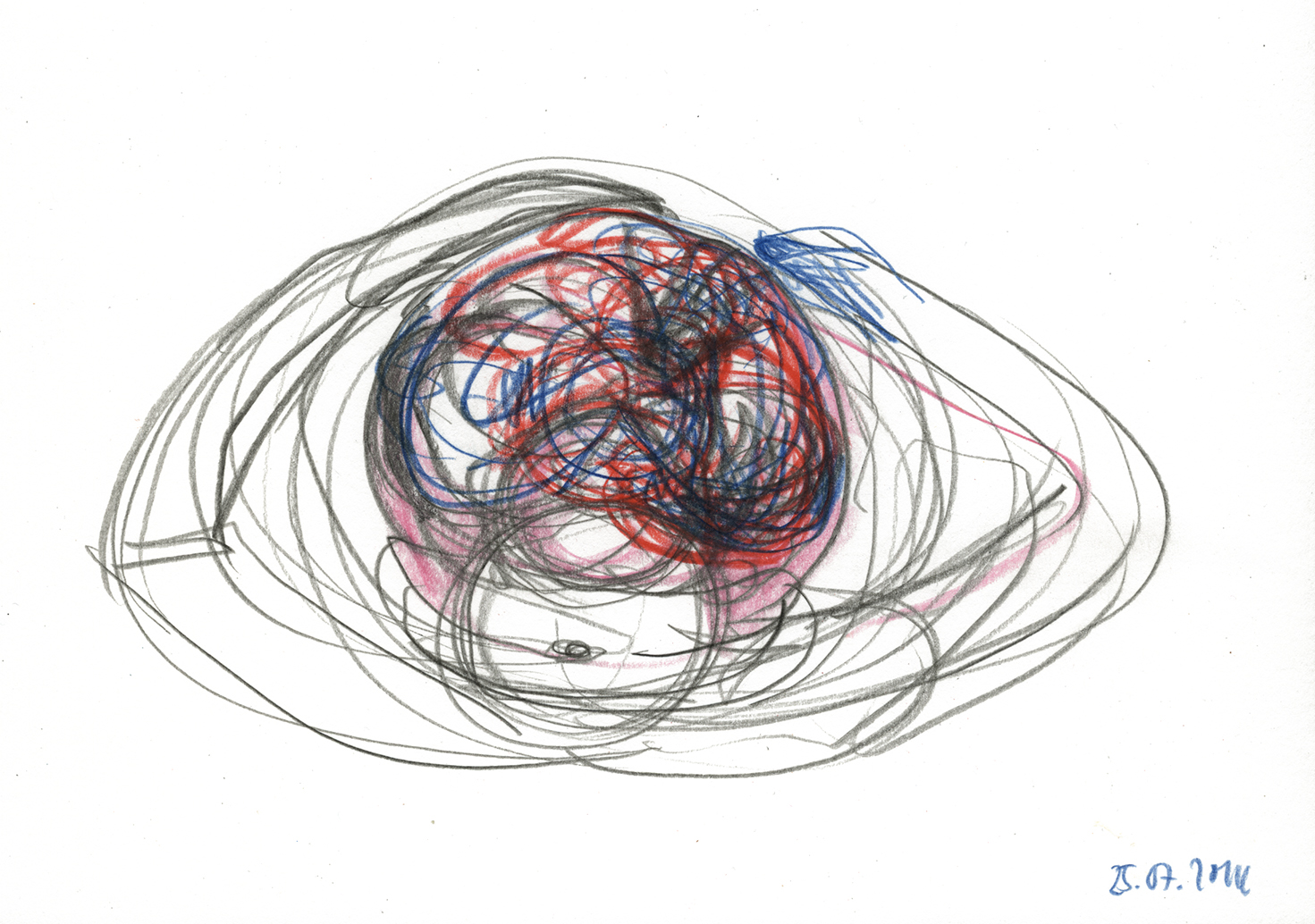
Simone Rueß Contact, 2016, colored paper on pencil, 14.8 x 21 cm, Germany, © Simone Rueß
Aside from the online publication, the outcome of this project will be the making of my performance-lecture ‘On Drawing’, in which I will share the results of my research, together with some drawing exercises to audience members. Finally, I will organise a series of exhibitions on this subject, in which different people – from artists to scientists or ordinary citizens – will be invited to take part. These exhibitions are to take place in Graz, London, Vienna and Berlin.
Methodology
In the first phase, the project draws on independent research to create the foundations of the project. This research is mostly theoretical, involving different sources of bibliography and interviews with neuroscientists. In a second phase, the research will acquire a theoretical-practical tone, in which different people will be interviewed and asked to contribute to the project, by stating the terms in which they use drawing as a research tool, and providing some samples. Finally, in the last phase, the project will be open to everyone who wishes to take part. Potential contributors will be invited to submit a drawing and statement that show how they use drawing as a thinking tool. These drawings will be used as part of the project, in upcoming exhibitions, uploaded on the blog, with previous consent of the owners.
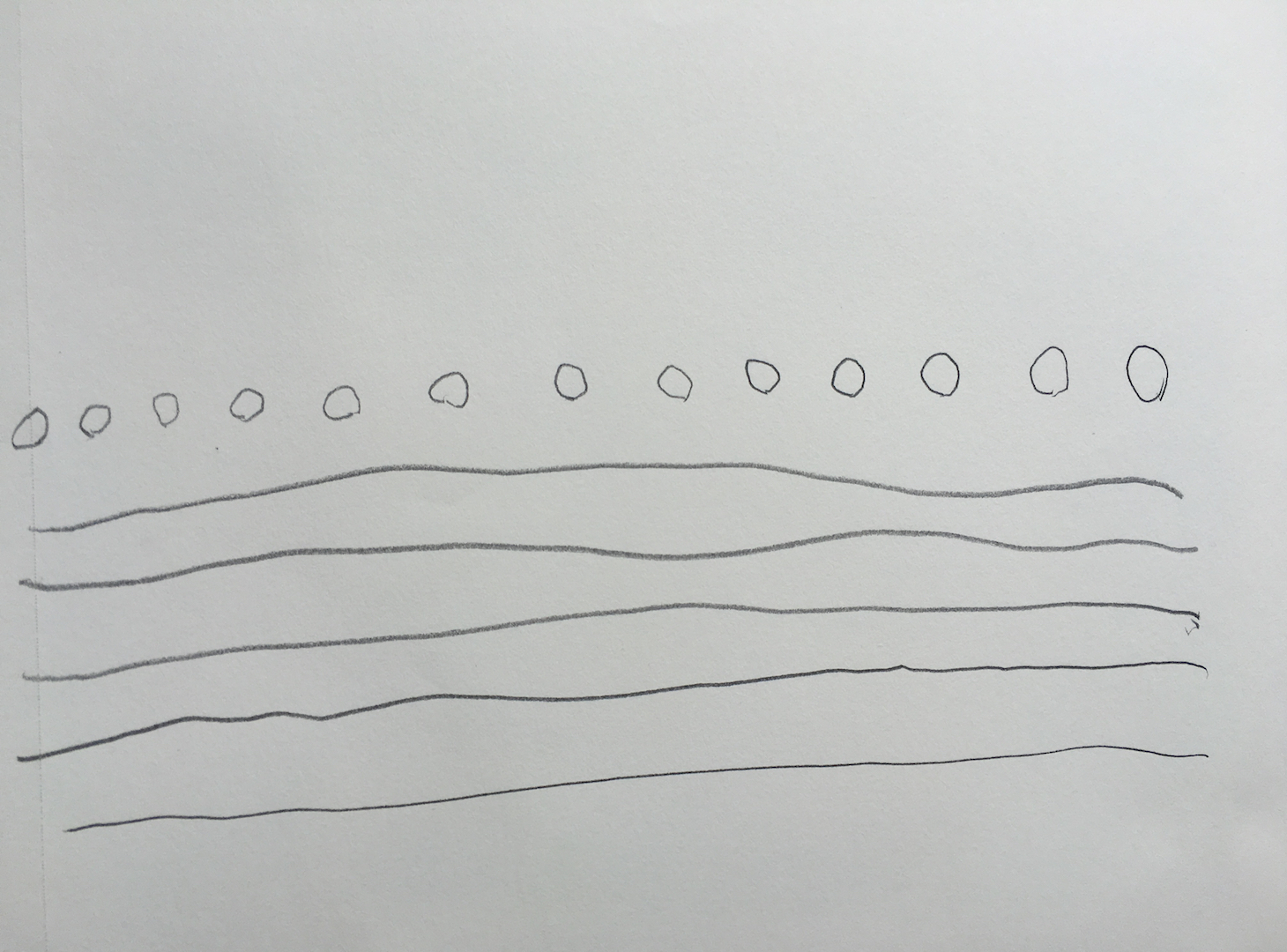
Mina Pegourie, Geometric Forms, 2014, pencil on paper, 14,8 x 5, 8 cm, Saint-Cirq-Lapopie (FR) © Mina Pegourie
Context/abstract:
On drawing
Drawing is a common tool used by artists, scientists, technicians, ordinary people and even children. Many people use drawing as a thinking process, in order to find a solution for everyday problems – whether they are technicians such as architects, plumbers or choreographers, or are artists, entertainers, or healers using drawing as a therapeutic skill such as social workers, doctors, etc. Nevertheless, artists are probably the only ones who use drawing as a process (. i.e. a tool to think) and also as a product (i.e. art to exhibit). Thus, science has have become increasingly interested in the ways in which artists think through drawing. In science, drawing is usually perceived as a visualisation skill. Scientists convert data into drawings in order to quantity/visualise the results of their research, as it helps to get a clearer picture. In the artistic field, on the contrary, drawing is a tool to get inspiration and to generate new ideas.
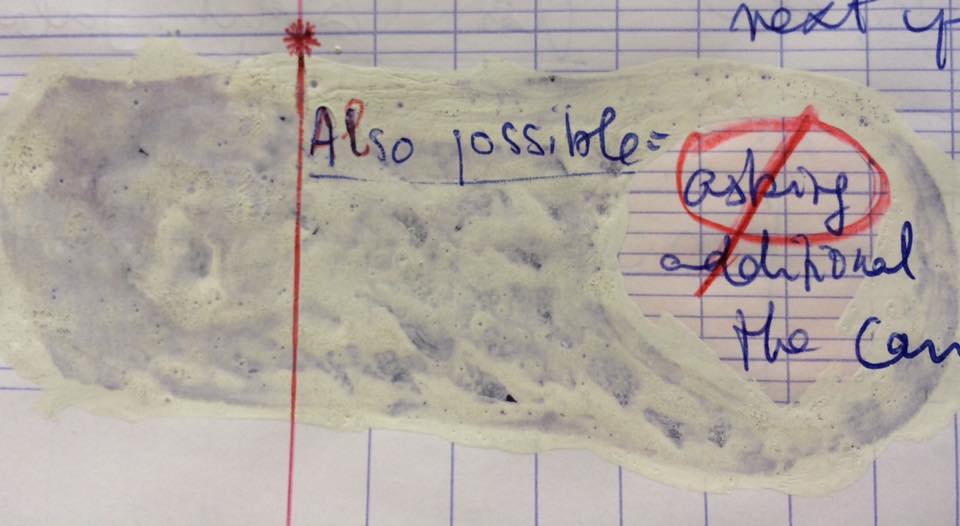
Jean-Baptiste Joly Untitled, 2016, rollerball, pencil and tipp-ex, 17 x 22 cm, Stuttgart (DE) © Jean-Baptiste Joly
Similar to walking, drawing has an impact on the brain, stimulating lateral thinking. Besides, when we draw the hand is connected with the brain through the nervous system, contributing to the process of generating knowledge. As Antonio Damasio proved in his book [1]Descartes Error: Emotion, Reason, and the Human Brain, the brain isn’t the sole decision-maker, as Renes Descartes had stipulated in the precept ‘Cogito Ergo Sum’, because the body contributes to the process of decision-making. That is to say that the body experiences emotions that are later communicated to the brain through the nervous system.
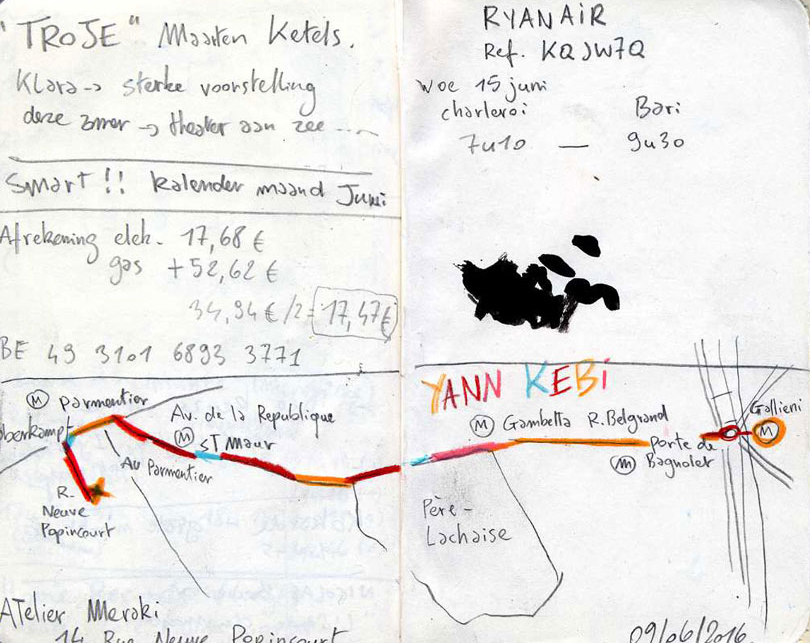
Jimmy Kosolovsky, A walk to a gallery, 2016, colored pencil and ink on paper, 17,5 x 14 cm, Paris (FR) © Jimmy Kololovsky
Accordingly to neuroscience, our brain is in constant mutation, and its capacities can be improved through different activities, such as drawing, regardless of our age or genetic composition. The brain’s plasticity occurs in different stages: at the beginning of life, as a consequence of brain injury and in adulthood, and every time we learn something new. Indeed, one of the most surprising aspects of neuroplasticity is that, when we become an expert in something (e.g. learn a new language), the area of the brain that has to deal with that skill grows (and the others diminish). As Dr. Luis Lacerda, researcher from the Natbrainlab (UK), who specialises in neuroimaging, clarified in an interview: ‘There is process called pruning, in which the neurons that are not being used are pruned… But, the volume of the brain is limited; therefore if one part becomes bigger, another one needs to diminish.’
Moreover, different studies suggest that artistic training may impact the structure of the brain – evidence on this matter was already found in different professions, such as [2]musicians and taxi drivers[3].
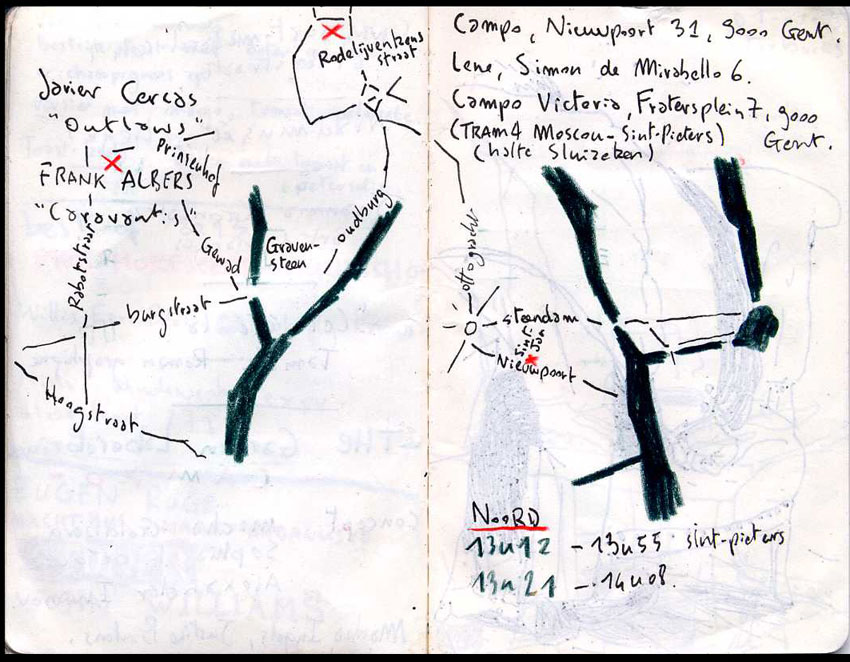
Jimmy Kosolovsky, Map for the Campo Theatre, 2015, ink on paper, 17,5 x 14 cm, Ghent (BE) © Jimmy Kololovsky
Nonetheless, only recently someone dedicated an exploratory study to the specific case of visual artists – Dr. Rebecca Chamberlain from the KU, Leuven (BE), conducted the research ‘[4]Drawing at the right side of the brain’, which aimed at analysing the impact of developing a visual skill in artists onto the structure of the brain. The study was developed with students from Swansea Metropolitan University, Wales, and Royal College of Arts, London, between 2008 and 2011. The results of the study point to the same conclusions already found in other communities:‘[5]observational drawing ability relates to changes in structures pertaining to fine motor control and procedural memory, and that artistic training in addition is associated with enhancement of structures pertaining to visual imagery’. Thus, drawing may influence the composition of the brain, as well as increasing long-term memory. As we know, the brain is divided in two separate areas – the left and the right hemisphere, which are interconnected, but play different cognitive roles. The left side is associated with logic, language, science and decision-making. The right hemisphere commands intuition, imagination, emotions and creativity. As Dr. Luis Lacerda clarifies: ‘It is proved that there is reorganisation in the brain. Depending on the stimulus – be it visual or audio –- there is a transformation – neuroplasticity. This change happens daily in each of us, but on a small scale. The long-term change that affects the structure of the brain depends on genetic factors, ambient, but usually takes more time to verify’.
Nevertheless, today, we live in a world that is increasingly digital and visual; we perform less and less physical activities, such as drawing or writing. Thus, this change will affect the structure of the brain, as well as our ability to assimilate and process information. Several studies made with resonance magnetic imaging (MRI) show that handwriting may contribute to a better fine-motor skill development. For instance, in 2014, Karin Harman James, Assistant Professor of Psychology and Neuroscience at Indiana University, conducted the study ‘[6]The effects of handwriting experience on functional brain development in pre-literate children’. The results suggest that the neural activity of children who practise handwriting is far more developed and adult than the other ones. Thus, computers are commonly blamed by diminishing children’s learning ability and memory. Although some people also point out the role that iPads play in learning languages, the skills are different, as selecting a letter is different from manually drawing it. Nevertheless, the role played by electronic devices in the cognitive process has changed over the recent decades, as a consequence of the digital culture in which we live.
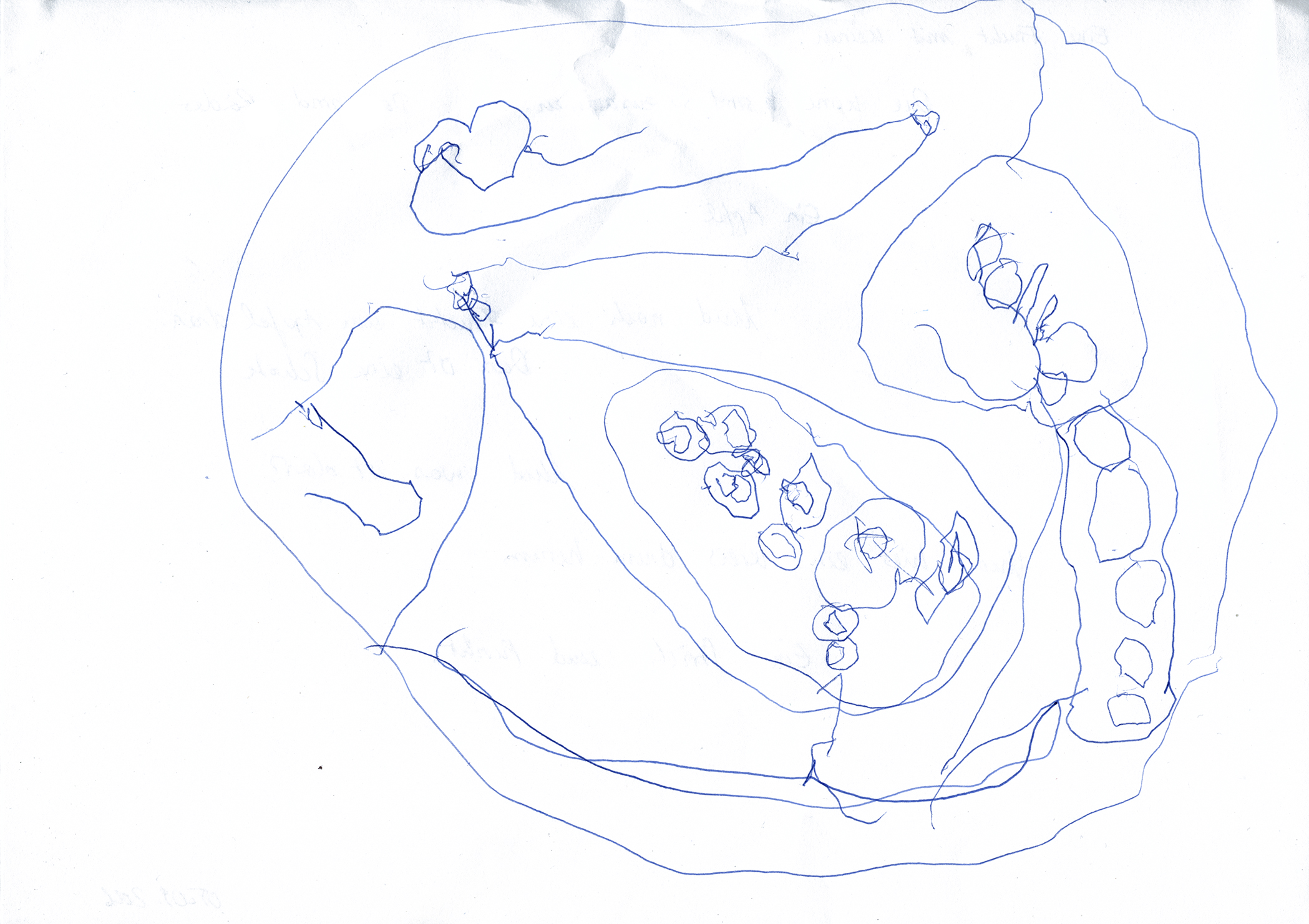
Leon Bruno Rueß, Apple with pips, a pod and a circle with a line and a dot, 2016, ink on paper, 29.61 x 20.9 cm, Stuttgart (DE) © Leon Bruno Rueß
Nevertheless, we know, from different studies undertaken over time, that human brain evolves accordingly to the context, in which we live. That is how, in broad terms, human evolution has been processed, since pre-history. As Bruce Wexler explains:
‘[7]The most fundamental difference between the human brain and those of other mammals is the greater extent to which the development of its structure and function is influenced by sensory input’.
Thus, perhaps the first distinction that needs to be made deals with the concept of the mind. Hence, and although most people commonly associate the brain with the skull, thinking is an integrated activity, which involves the body, and some argue that external objects are actively used during the thinking process and even the environment. As was already explained through the studies of Antonio Damasio, the brain is not the sole decision-maker, as the body plays a role in the cognitive process. Damasio conducted clinical studies of brain lesions in patients whose emotions were impaired due to cancer, accidents and other forms of trauma. While these patients measured well in intelligence tests, they were unable to make decisions, in spite of emotional trauma. Thus, this proved that the body is not the sole decision-maker, and that body and brain are a coupled system.
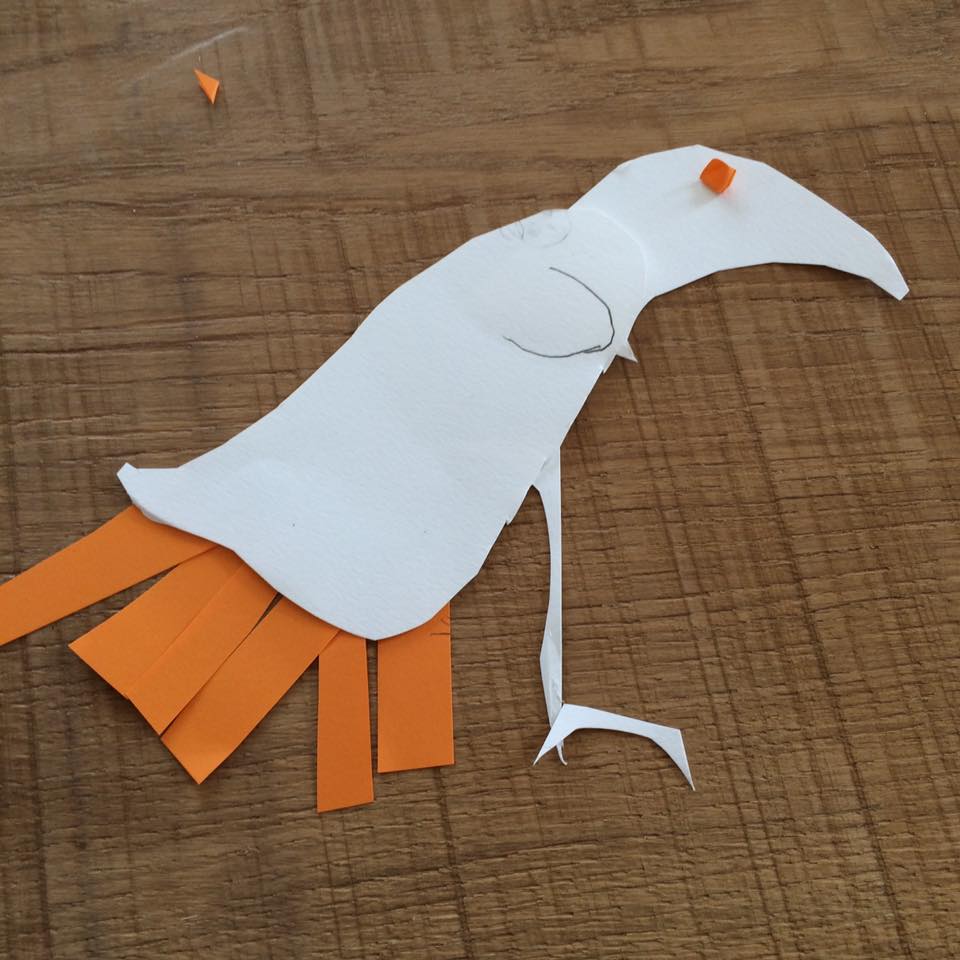
Jean-Baptiste Joly, Untitled, 2016, photography of a loose paper collage, 9 x 9 cm, Lausanne (CH) © Jean-Baptiste Joly
What is more, Andy Clarke and David Chambers took the concept of the mind further in 1998, in their seminal paper‘[8]The Extended Mind’, in which they claim that external objects might be part of the mind, in case they are actively used to think. They give as an example the case of two friends who want to arrive at the museum. The first one relies on his memory to find the place. The second one, who suffers from Alzheimer’s, has the help of his notebook, where he stores the address. Hence, the notebook can be seen as a hard drive, that accomplishes the same role of the biological memory. Hence, it should be perceived as being part of the mind. Besides, not only patients who suffer from neurological diseases might think through/with artefacts, as also ordinary people might follow the same procedure. Clark and Chambers give the example of the scrabble game, in which a player can complete words by mentally rotating the pieces of the game; working on the computer, pressing keys; or physically rotating the parts of the game. Thus, if the first gesture is perceived as intellectual, so should the other ones, as the artefacts are actively part of the thinking process. The Parity Principle coined by the duo establishes that if one object performs an activity that is perceived as being mental, it should be part of the mind of the user.
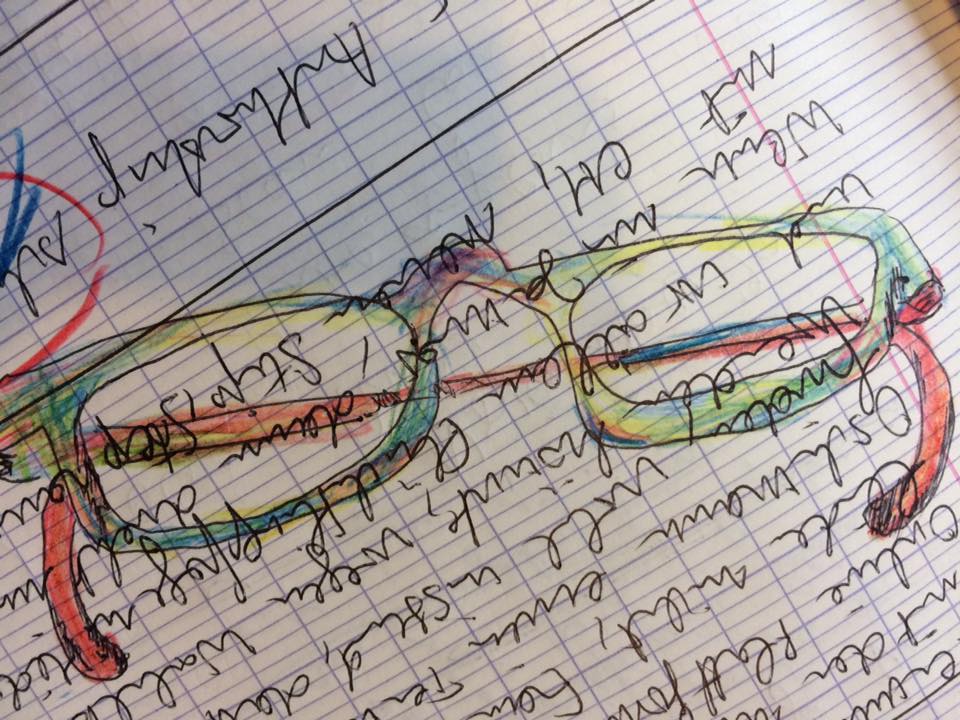
Jean-Baptiste Joly, Untitled, 2016, paper, pencil and rollerball on paper, 17 x 22 cm, Stuttgart (DE) © Jean-Baptiste Joly
Nonetheless, one might intuitively oppose this idea, because if the objects are part of the mind, the brain is the centre of it, thus, it does not play an equal role. Obviously, objects are not able to generate knowledge by themselves. Moreover, visualisation skills are part of what we perceive to be intelligence, and well-known geniuses are recognised for having enhanced abstraction skills, which did not depend on external factors. On the other hand, it is also common knowledge that external factors play an increasing role in all aspects of contemporary societies, which seem to be more and more volatile, and permeable to change. Thus, perhaps, one needs to change the criteria through which we look at events. For instance, in ‘[9]How do we think’, USA researcher Katherine Hayles considers that not only is the mind composed of the brain-body and external objects, as a coupled system, it also extends itself in the environment. As she pictures it:
‘The more one works with digital technologies, the more one comes to appreciate the capacity of networked and programmable machines to carry out sophisticated cognitive tasks, the more the keyboard comes to seem one extension of one’s thoughts rather than an external device on which one types. Embodiment then takes the form of extended cognition, in which human agency and thought are enmeshed within larger networks that extend beyond the desktop computer into environment’
Finally, digital culture also raises philosophical questions in regard to the connection between image and words in contemporary society. Ludwig Wittgenstein has suggested in his book [10]‘Philosophical Investigations’ that images are somehow subservient of words, in the sense that we only know the meaning of an image because we have learnt it before through words. For instance, if someone shows a picture of a bird, we know what it stands for, because we learned the word bird, in written or oral speech. Nevertheless, in online communication, the images are used as unique signifiers, alienated from the words. They become somehow online symbols or voids, without any reference to the real world. Hence, the question arises: What happens to human communication in this world of alienated images? How does it impact our thinking process?
Obviously, there is no right answer to this question, as the effects of the digital culture are not seen on a deep level in human nature. But, if the brain is always shifting its functions, it is perhaps arguable that it will reconfigure itself, incorporating the needs of the digital culture. As Dr. Luis Lacerda states, the consequences of the digital culture ‘is something that we probably won’t be able to see in this generation, but for sure, the habits that we have today will change our species.’
See video trailer: https://vimeo.com/
[1] Damasio, Antonio, Descartes’ Error (New York: Avon Books, 1994), p. 250
[2] Gaser, C. & Schlaug, G., ‘Brain structures differ between musicians and non- musicians’. Journal of Neuroscience, 23, 9240-9245 (2003)
[3] Maguire, E. A., Gadian, D. G., Johnsrude, I. S., Good, C. D., Ashburner, J., Frackowiak, R. S. J. et al. (2000). Navigation-related structural changes in the hippocampi of taxi drivers. Proceedings of the National Academy of Sciences of the United States of America, 97, 4398-4403
[4] Chamberlain et al, ‘Drawing on the right side of the brain: a voxel-based morphometry analysis of observational drawing’, NeuroImage, vol. 96, pp. 167-173, 2014
[5] [Published in Trends in Neuroscience and Education 1(1):32-42, 2012]
[7] Wexler, Bruce (2014), ‘Shaping the Environments that Shape Our Brains: A Long Term Perspective’, in Cognitive Architecture Designing Respond Environment (pp. 142-167). New York: Routledge
[8] [Published in Analysis 58:10-23, 1998. Reprinted in (p. Grim, ed) The Philosophers Annual, vol XXI, 1998.]
[9] Hayles, Katherine, How do We Think (Chicago and London : The University of Chicago Press, 2012), p. 3
[10] Wittgenstein, Ludwig, Philosophical Investigations (West Sussex: Blackwell Publishing Ltd, 2009)




